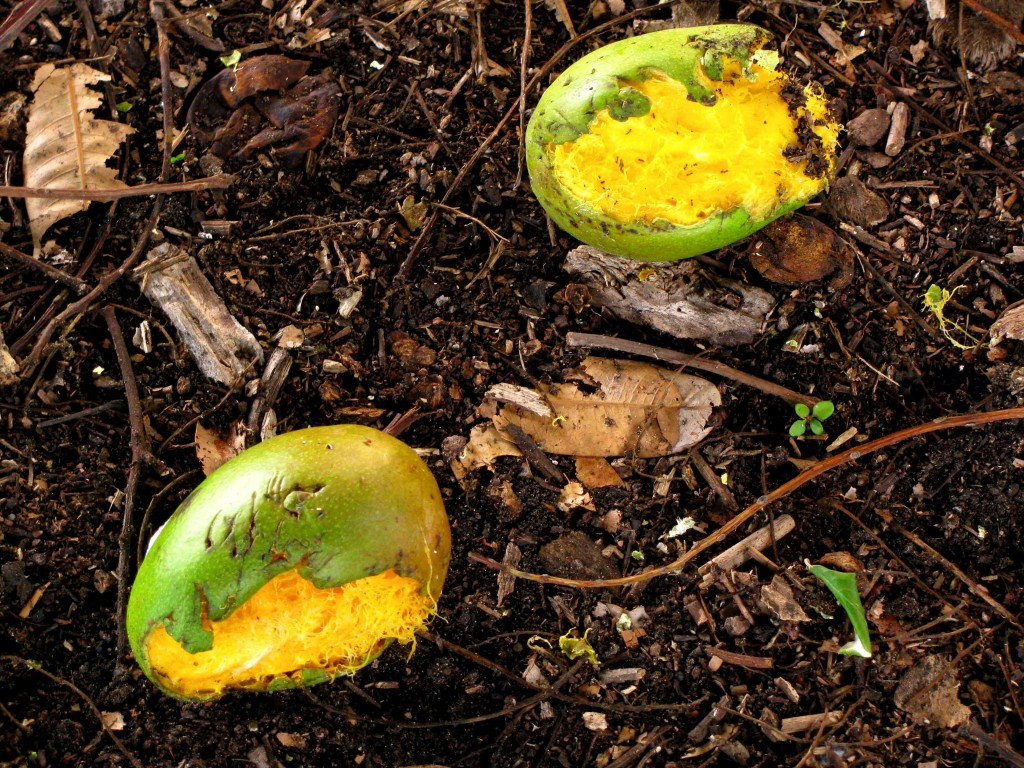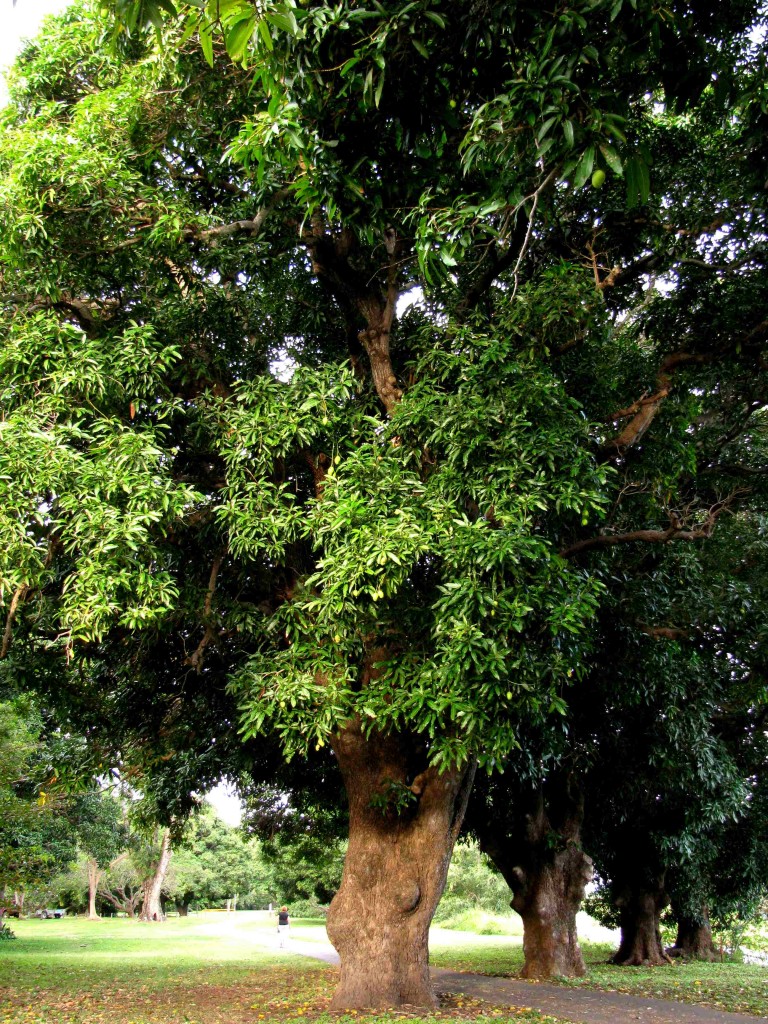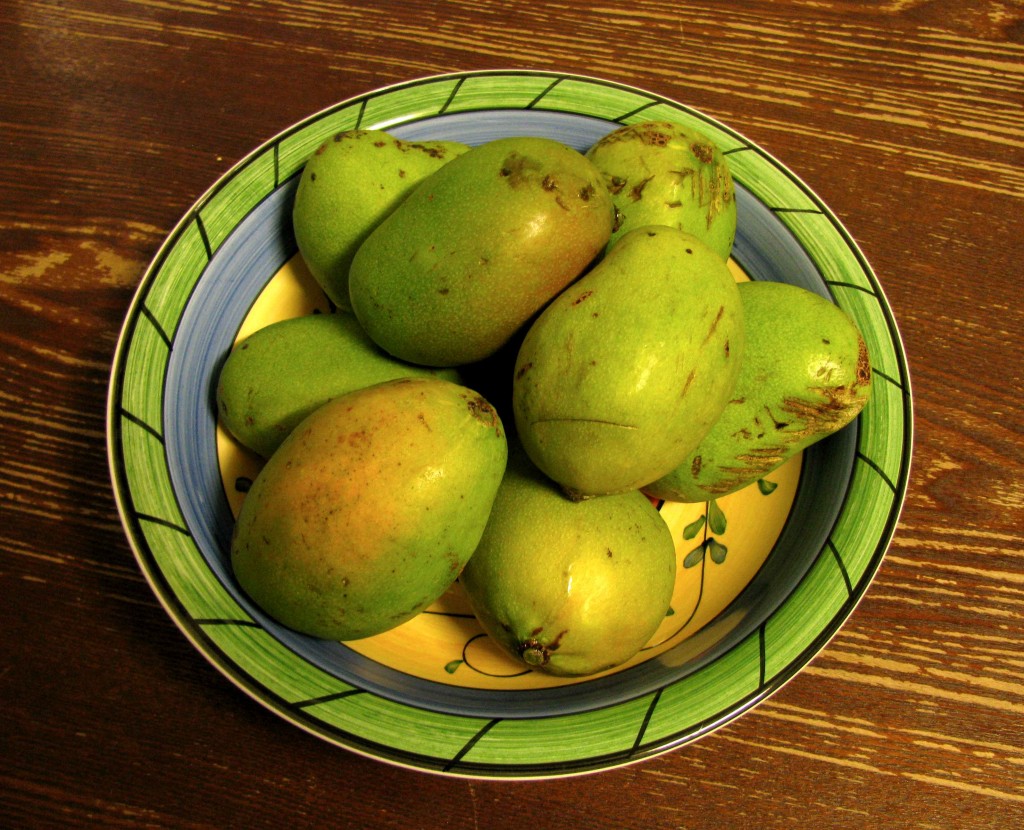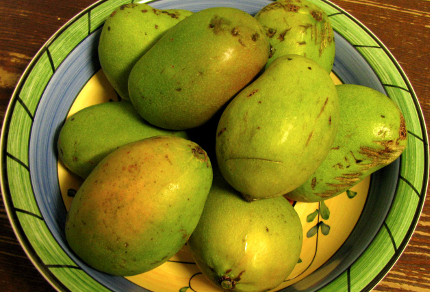
Fruiting Mango Tree (© Magi Nams)
Wind whipped through the parkway as I cycled this morning. It rustled tree leaves, carried wet smells from the river, muted the chorus of avian voices that trilled, sputtered, and squawked. Australian pelicans rode the Ross River like stately ships while magpie geese perched on tree branches, and Pacific black ducks basked on the shore. Mangoes lay scattered on the parkway lawns beneath the dense crowns of blocky mango trees. They stained the paved path with gold-orange pulp that seemed to embody the essence of the tropics – lush, vivid, nurtured by the sun. I thought of October in Nova Scotia, of frosts sparkling at dawn, of the first flakes of snow falling, and of a hunter’s moon rising huge and white in the night. Caught in two worlds, I rode on, past Aplin’s Weir, under the bridge at Nathan Street, as far as Gleeson’s Weir, where new pale concrete reinforces the oldest of Townsville’s three weirs on the Ross.
On the day of Vilis’s and my arrival in Australia, Millie, a neighbour of the professor whose Queenslander we were about to house-sit, pointed out a huge mango tree in the home’s back yard. Yesterday, Vilis related to me a comment made by his sabbatical contact Chris Johnson, who mentioned that in years past people could pay their entire year’s rent by selling the harvest from a mango tree in the back yard. I’ve become familiar with the shape of these trees, which grow 35 or 40 metres high and possess thick crowns up to 10 metres across.1 I’ve seen their pink, new leaves unfurl during the Wet, tinging the overall dark, evergreen foliage with warm burgundy. I’ve seen row after row of orchard mangoes dressed out in panicles of pale green blossoms in early July. And I’ve observed thumb-length green fruits on the parkway trees in late August, which have since plumped out into the four-inch fruits now littering the parkway lawns, many chewed, perhaps by possums or fruit bats, or pecked by birds.

Mangoes as Wildlife Food (© Magi Nams)

Mango Trees, Ross River Parkway, Townsville (© Magi Nams)
Mangoes, which are native to the Indian subcontinent, are now grown around the world in tropical and subtropical regions and comprise about half of the tropical fruits grown throughout the world.1 In Australia, mangoes are produced in Western Australia, Northern Territory, northern New South Wales, and in Queensland, which is the largest cultivator.2 Like in India, nearly all of Australia’s mangoes are consumed within the country,1,2 and the majority as fresh fruit.2
As I rode the parkway, I observed Townsvillians collecting windfall mangoes, so on my return ride, I paused beneath two huge trees to scout the ground for undamaged fruits. Then I rode home with pockets full of mangoes and thoughts of a gleaming harvest moon spilling cold, blue light onto the hills and valleys of Nova Scotia.

Windfall Mangoes (© Magi Nams)
References:
1. Wikipedia. Mango. Updated 16-Oct-2010. Accessed 19-Oct-2010. http://en.wikipedia.org/wiki/Mango
2. Australian Mangoes. Where Do My Mangoes Come From? © Mangoes 2009. Accessed 19-Oct-2010. http://www.mangoes.net.au/homegrown/origins.aspx


